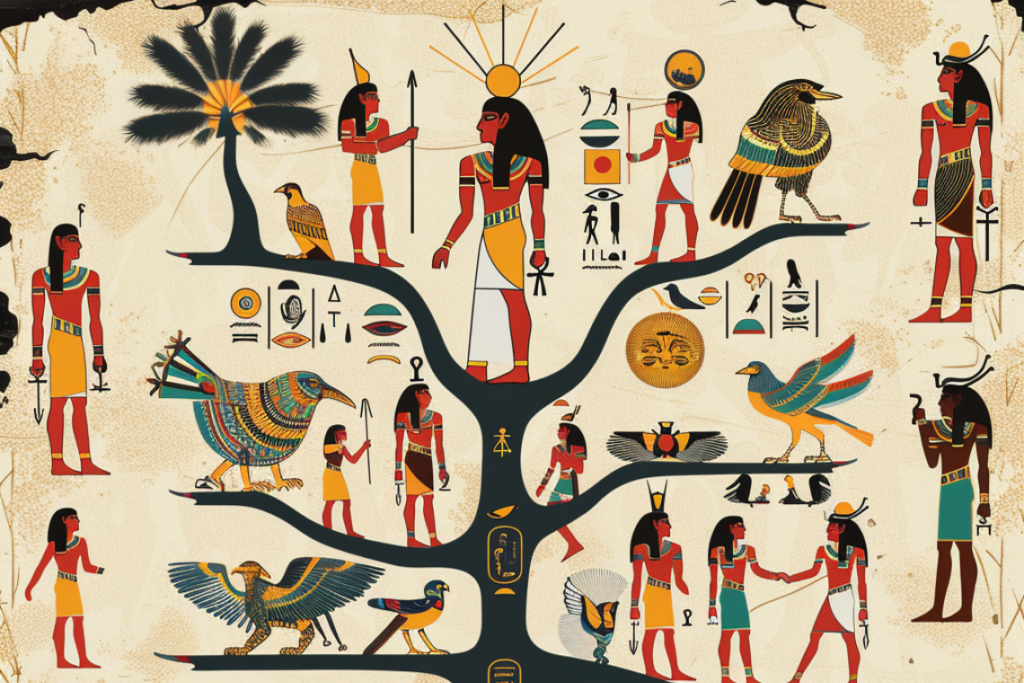
Akhenaten (Religious Beliefs)
Queen Nefertiti played a significant role in the religious life of New Kingdom Egypt. One of the most important events in Egypt was the change in religion that had always been polytheistic religion. Ancient Egyptian religion had always practiced one religion which was polytheistic, where they worshiped more than one God. When Akhenaten was pharaoh he tried to change the official religion from polytheistic to monotheism, which is the worship of one god. The sun disc God was the God he chose to worship. However, Akhenaten’s religious reforms and artistic innovations were not universally accepted. After his death, his successors dismantled his religious reforms and returned to traditional Egyptian polytheism.

Symbols Representing Polytheism

Sun Disc God-Monotheism
Family
Nefertiti’s parents are unknown. Egyptians believe she was a princess from Syria. After marrying Nefertiti and his reign as pharaoh, Akhenaten changed his name from Amenhotep to Akhenaten and moved his family to Thebes (located along the Nile river.) and named it after himself Akhenaten. Nefertiti and Akhenaten had six daughters in total called Meritaten, Meketaten, Ankhesenpaaten (later called Ankhesenaumhen she married Tutankhamun.), Neferneferuaten, Tasherit, and Setepenre.

Akhenaten, Nefertiti And Her 6 Daughters
The exact dates when Nefertiti married
Akhenaten and became the king’s Great Royal Wife are uncertain.
Their six known daughters (and estimated years of birth) were:
1-Meritaten: No later than year 1.
2-Meketaten: Year 4.
3-Ankhesenpaaten, later known as Ankhesenamun, wife of Tutankhamun
4-Neferneferuaten Tasherit: Year 8.
5-Neferneferure: Year 9.
6-Setepenre: Year 11